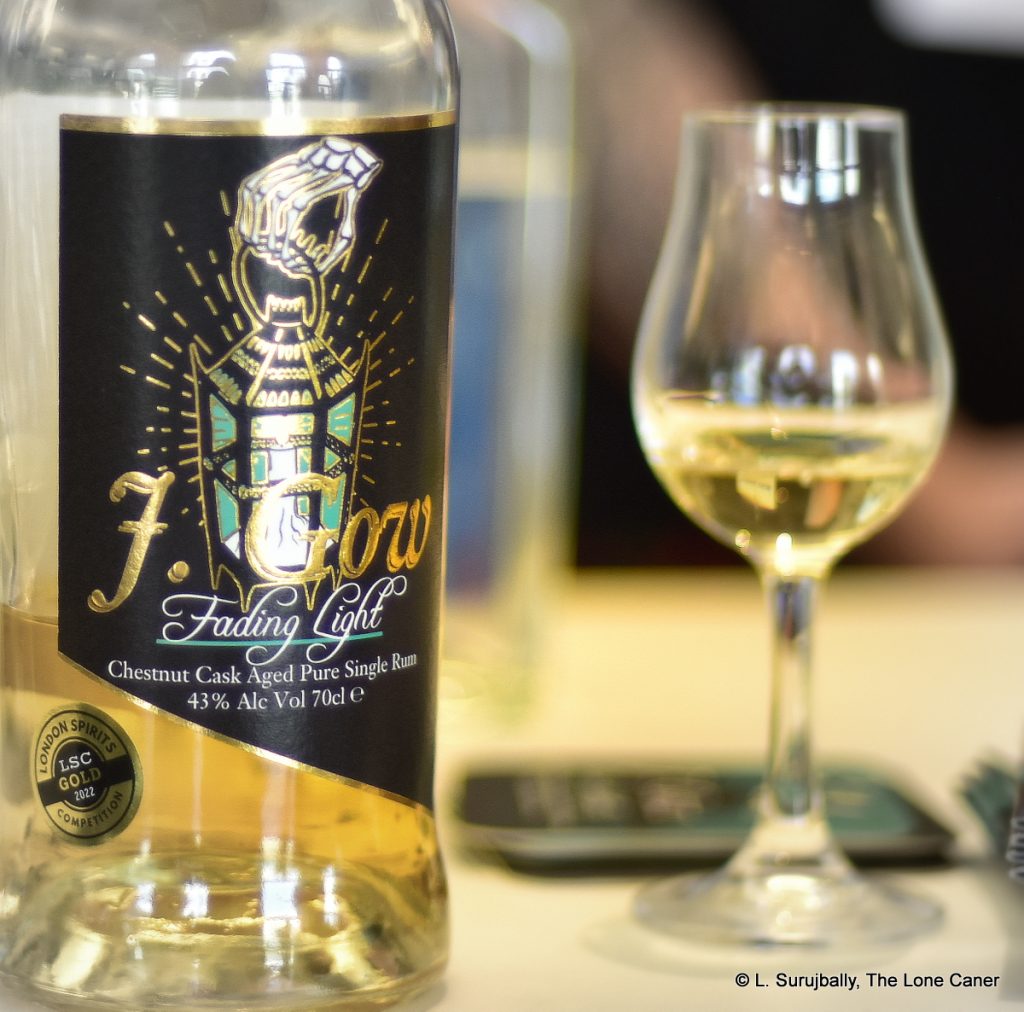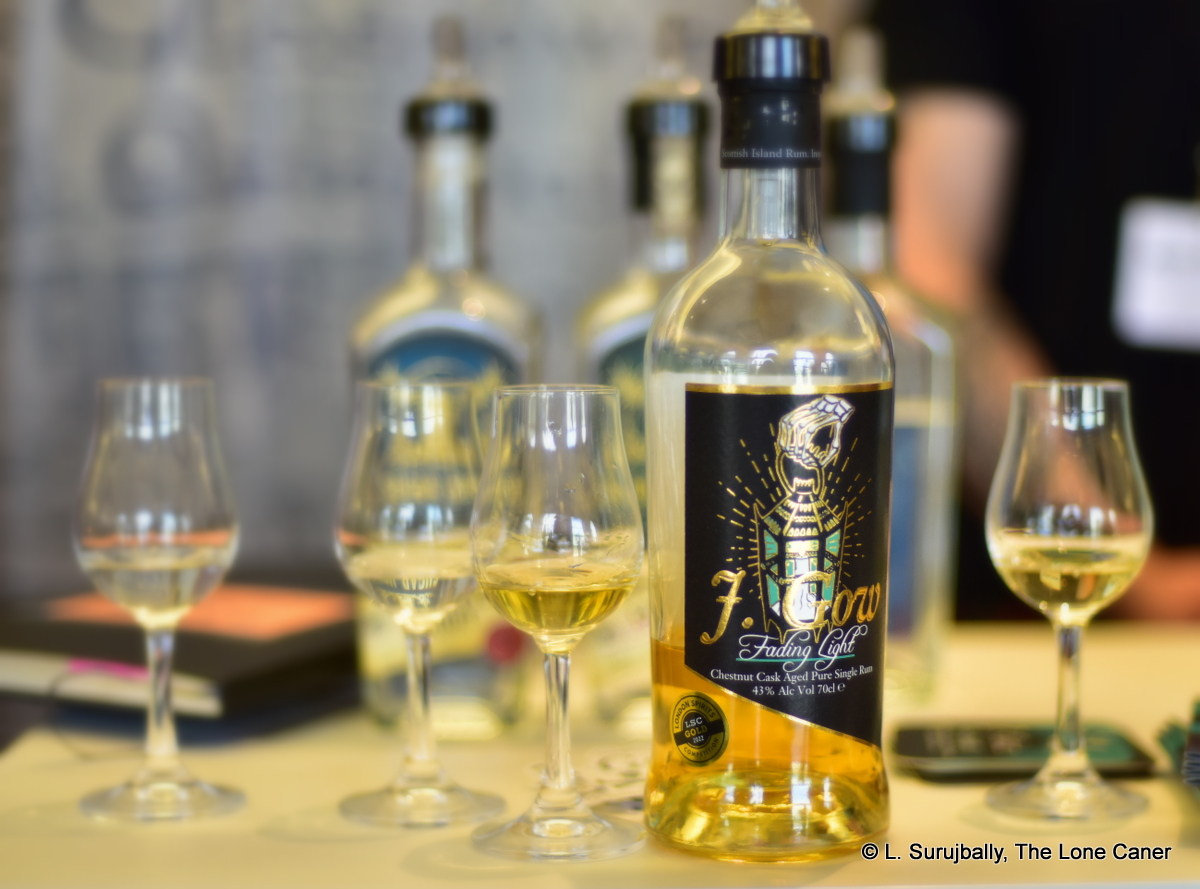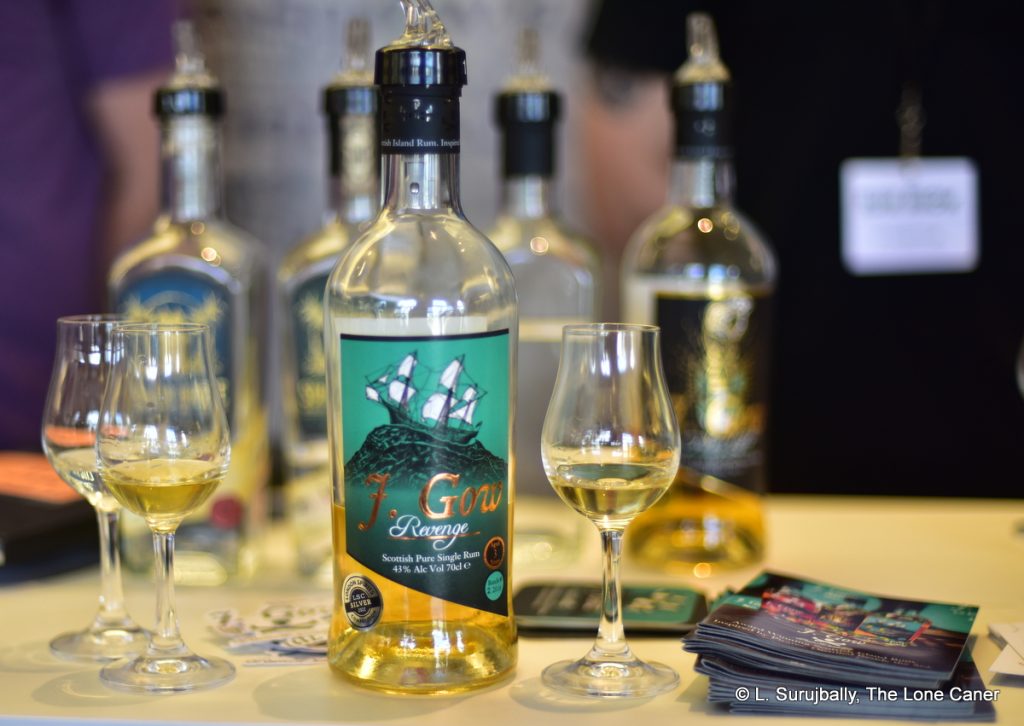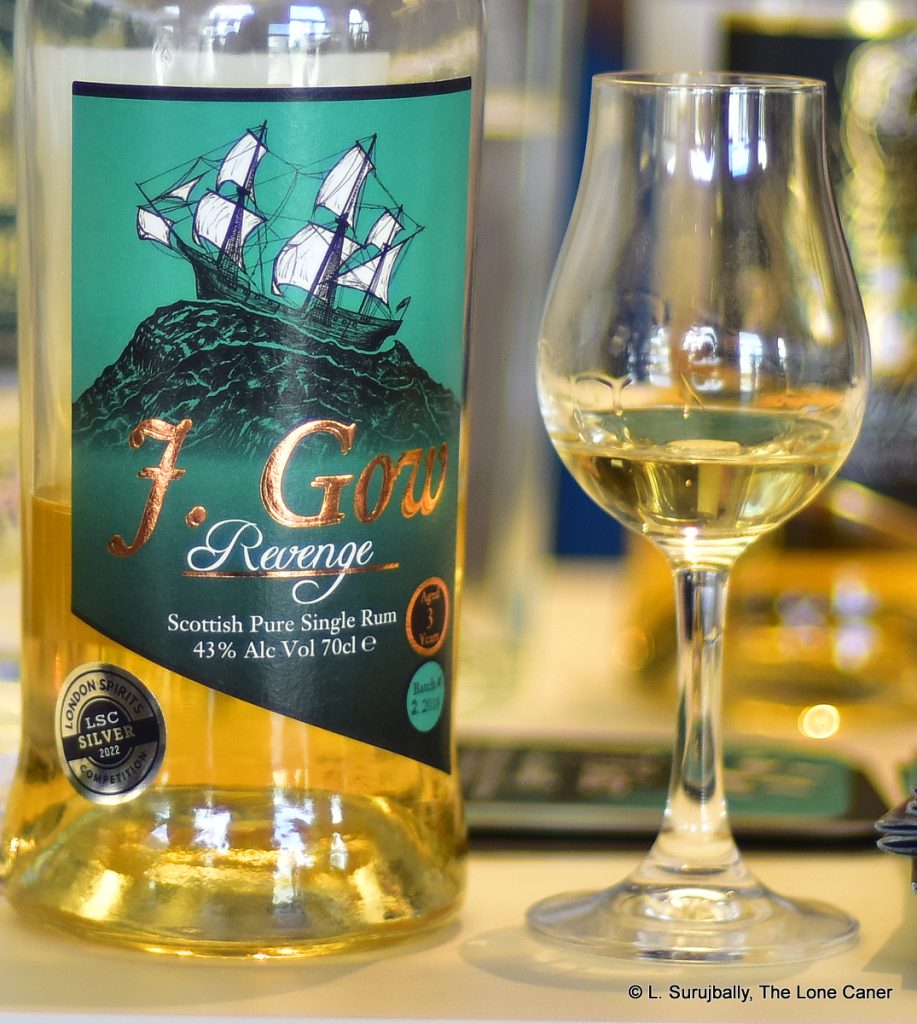If I enjoyed the naming J. Gow’s growling salvo across the rum world’s bows, the “Revenge,” then as a lover of language and an avid amateur photographer, I must confess to liking and appreciating the quiet romanticism the “Fading Light” title even more.1 And since that wasn’t enough for VS Distillers (the company behind the brand), it was also a more distinctive, even better rum than the “Revenge”…which as you may recall from last week’s review, was no slouch itself.
I won’t rehash the background of this new Scottish distillery ensconced on a tiny island in the Orkneys, so far up north that if they stepped a bit out of the shallows they’d be speaking Norwegian (see the “Revenge” review for a brief company backgrounder if you’re interested). Let’s just note that the rum has a fourteen day fermentation cycle from molasses, was double-distilled in a pot still, and released at just about a year old … after having been aged in a chestnut casks, not ex-Bourbon. And for all it its youth and northern continental ageing and “mere” 43% ABV strength, it channels a surprising amount of Jamaican in a way the would make a casual rum buying tourist from Cockpit County or London or Toronto blink and check both google maps and their ticket.
 Consider. Right from the cracking of the bottle, the rum oozes funk, a nicely textured, crisp melange of liquid Jamaican: Fanta and 7-up, both sweet and citrus-y, with enough strawberries, gooseberries, pineapple and bubble gum to cure all that ails you, while not ignoring just a small whiff of a midden heap in hot weather: I gues this was added for a bit of kick or something. What’s great is that it doesn’t end there: there’s also olives, brine, mixing it up in the backyard with caramel, toffee, brown sugar, some nuts and molasses, and behind it all is some fresh baked sweet pastry egging the lot on.
Consider. Right from the cracking of the bottle, the rum oozes funk, a nicely textured, crisp melange of liquid Jamaican: Fanta and 7-up, both sweet and citrus-y, with enough strawberries, gooseberries, pineapple and bubble gum to cure all that ails you, while not ignoring just a small whiff of a midden heap in hot weather: I gues this was added for a bit of kick or something. What’s great is that it doesn’t end there: there’s also olives, brine, mixing it up in the backyard with caramel, toffee, brown sugar, some nuts and molasses, and behind it all is some fresh baked sweet pastry egging the lot on.
Much of this repeats on a quietly rambunctious palate. It starts out light and effervescent, with unripe cherries, oranges and pineapples, and even some agricole-like bright vegetal notes, acetones and nail polish. Olives, brine, breakfast spices and a dab of strong black tea. But there is also a dark side here, loamy, musky, with more pastries, molasses, guiness and malt thrown in – something like a sweetly dark beer – balancing off the funk and lighter florals and fruits. The finish is a quieter conclusion than one might have been led to expect given the foregoing, which is a function of the low strength: mostly some light fruits, a bit of citrus, some oranges and apples just starting to go off, and a whiff of a vulcanising shop working overtime on a hot drowsy Sunday afternoon.
See what I mean? The amount of tastes coming out of this thing is all out of proportion to either antecedents or expectations. It’s like a low-proofed Appleton Overproof, a mini stuffed with an idling turbocharger, and while not on the screaming level of crazy as the TECA, say, or the Hampden and WP high ester marques everyone dares themselves to try, for it to have the chops it does given where it’s from, where and how little it’s aged and what it’s aged in, is eye-opening. After trying it a few times at TWE Rumshow booth, keeping it in my fourth glass and then going back to try it a third time, I concluded that the “Fading Light” is an intriguing, original rum that while perhaps a little peculiar, is by no means off-putting, and not at all a refutation of “ruminess.” The entire time I was sampling, I was acutely aware that it was a serious spirit, a real rum, and I have tell you: I was impressed.
(#994)(86/100) ⭐⭐⭐⭐
Other notes
- The company also makes a “Wild Yeast” and “Hidden Depth” expressions which I have not tried (yet).
- Both The Fat Rum Pirate and Rum Barrel have reviewed this one, both positively.


